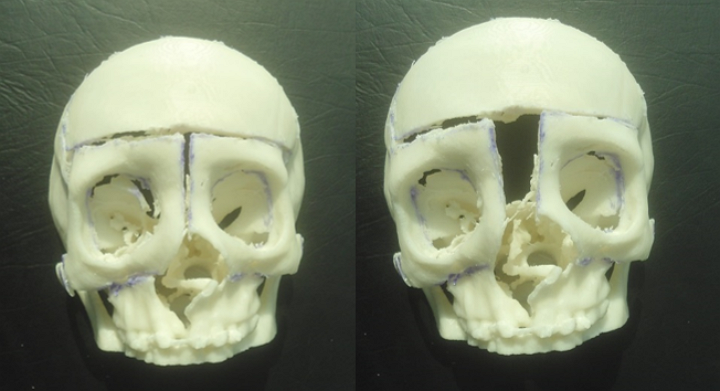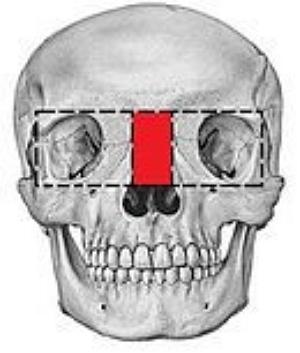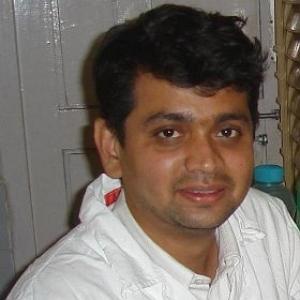Osteo3d Helps Doctors in India Correct Orbital Hypertelorism with 3D Printed Surgical Planning Model
 Orbital hypertelorism is a condition where there is an abnormally large distance between the eyes, and it refers specifically to the position of the bony orbits – or ‘eye sockets’ – which provide protection and support for the eyes lie within the skull.
Orbital hypertelorism is a condition where there is an abnormally large distance between the eyes, and it refers specifically to the position of the bony orbits – or ‘eye sockets’ – which provide protection and support for the eyes lie within the skull.
It can be due to abnormal development of the bones of the forehead and the base of the skull, can occur due to premature fusion of the bony plates of the skull, or can be caused by a variety of syndromes, such as Edwards, duplication, basal cell nevus, DiGeorge, and Loeys-Dietz syndromes, among other potential causes.
Enter Osteo3D, a Bangalore, India-based company backed by the df3d design factory, which specializes in 3D printing solutions for the healthcare field.
Dr. Sathish Vasishta, a craniomaxillofacial surgeon, and Dr. Derick Mendonca, a consulting plastic surgeon, used a 3D printed model to successfully plan and perform a surgical procedure at Sakra Hospital in Bangalore, which used a pair of techniques called ‘Box Osteotomy’ and ‘Facial Bi-Partition’ to take on the problem.
The doctors say the patient, Esther, was suffering from excess bone which had grown between the orbits. To correct the condition, it was necessary to remove bone on either side of the midline of the skull. And to complicate matters further, the patient also showed signs of what’s known as Orbital Dystopia, a condition where one bony orbit is not symmetrical with the other.
 Using CT scan data, a 3D printed model of the patient’s skull was created to help guide the surgeons and help them visualize the result of their work, and they say the use of the 3D printed model drastically reduced the operative time and ensured increased accuracy of the procedure.
Using CT scan data, a 3D printed model of the patient’s skull was created to help guide the surgeons and help them visualize the result of their work, and they say the use of the 3D printed model drastically reduced the operative time and ensured increased accuracy of the procedure.
According to the surgical team, using the model also helped them prevent mistakes during the operative procedure and allowed them to correctly design the “osteotomies” which would correct the Orbital Hypertelorism.
Before they entered the operating theater, the surgical team rehearsed the work by actually practicing the procedure on the 3D printed model. They say the pre-operative session allowed the doctors to accurately estimate what it would take to remove some 7.5 mm of bone on either side of skull’s midline in the horizontal plane and an additional 1.5mm of bone in vertical plane of the skull surrounding the right bony orbit.
By using the techniques they developed in the rehearsal session, and moving the bony compartment of the orbit to the midline on the model, the doctors achieved what’s called Orbital Symmetry for the patient on both the horizontal and vertical planes of the skull. Esther’s surgery was exceptionally complicated and took some 7.5 hours with several teams of doctors at work. And it was a critical need as Esther had been bullied and made fun of at school due to her appearance. Dr. Mendonca and Dr. Vasishta added that using the Osteo3d 3D printed medical models was critical to the success of this major craniofacial surgical process.
Esther’s surgery was exceptionally complicated and took some 7.5 hours with several teams of doctors at work. And it was a critical need as Esther had been bullied and made fun of at school due to her appearance. Dr. Mendonca and Dr. Vasishta added that using the Osteo3d 3D printed medical models was critical to the success of this major craniofacial surgical process.
Do you have any other stories we should know about where 3D printing technology has been used to help patients and doctors? Let us know in the Hypertelorism With 3D Printed Modeling forum thread on 3DPB.com.
Subscribe to Our Email Newsletter
Stay up-to-date on all the latest news from the 3D printing industry and receive information and offers from third party vendors.
You May Also Like
Profiling a Construction 3D Printing Pioneer: US Army Corps of Engineers’ Megan Kreiger
The world of construction 3D printing is still so new that the true experts can probably be counted on two hands. Among them is Megan Kreiger, Portfolio Manager of Additive...
US Army Corps of Engineers Taps Lincoln Electric & Eaton for Largest 3D Printed US Civil Works Part
The Soo Locks sit on the US-Canadian border, enabling maritime travel between Lake Superior and Lake Huron, from which ships can reach the rest of the Great Lakes. Crafts carrying...
Construction 3D Printing CEO Reflects on Being Female in Construction
Natalie Wadley, CEO of ChangeMaker3D, could hear the words of her daughter sitting next to her resounding in her head. “Mum, MUM, you’ve won!” Wadley had just won the prestigious...
1Print to Commercialize 3D Printed Coastal Resilience Solutions
1Print, a company that specializes in deploying additive construction (AC) for infrastructure projects, has entered an agreement with the University of Miami (UM) to accelerate commercialization of the SEAHIVE shoreline...






























